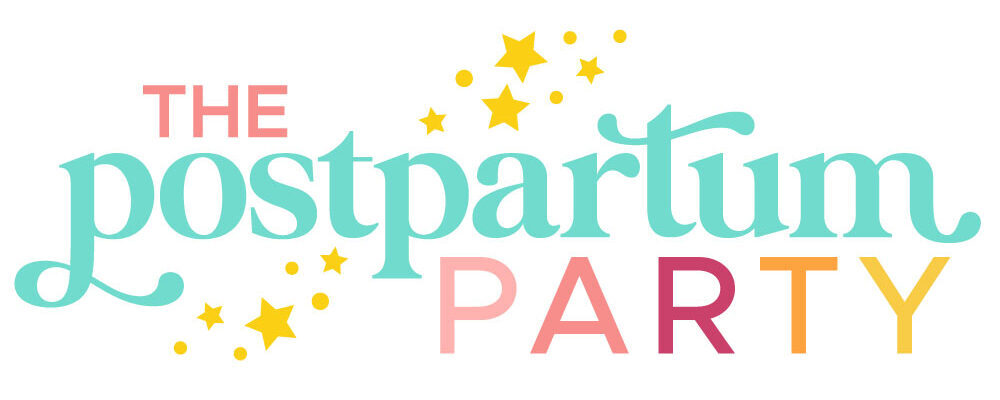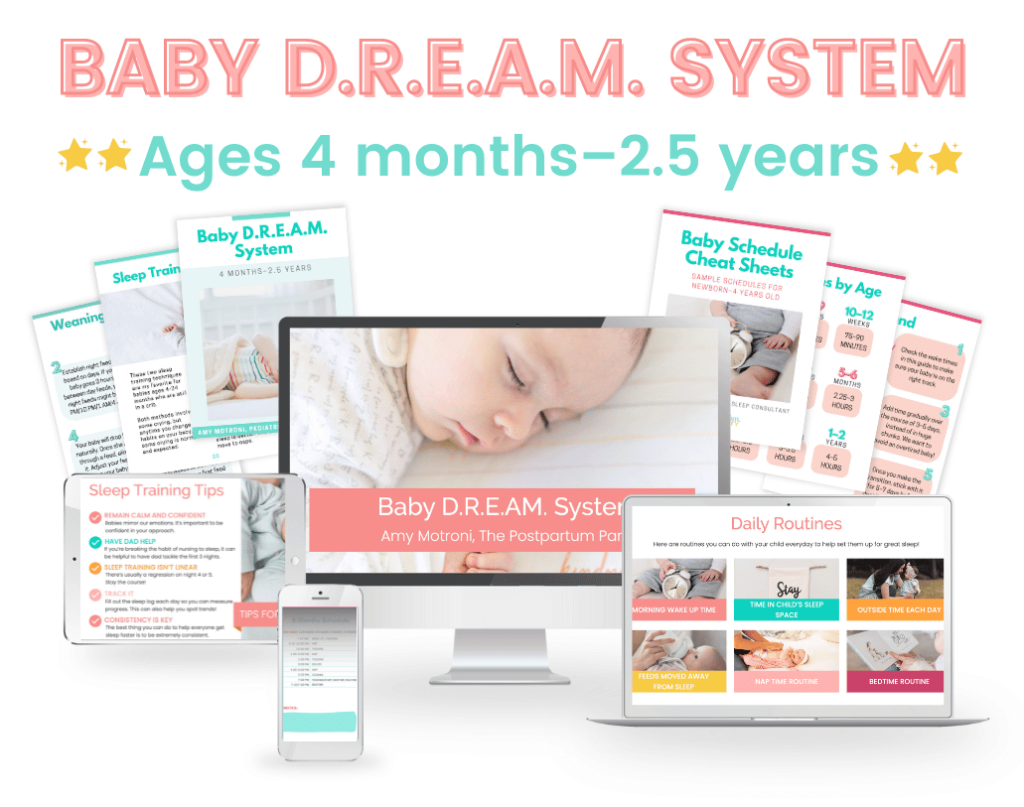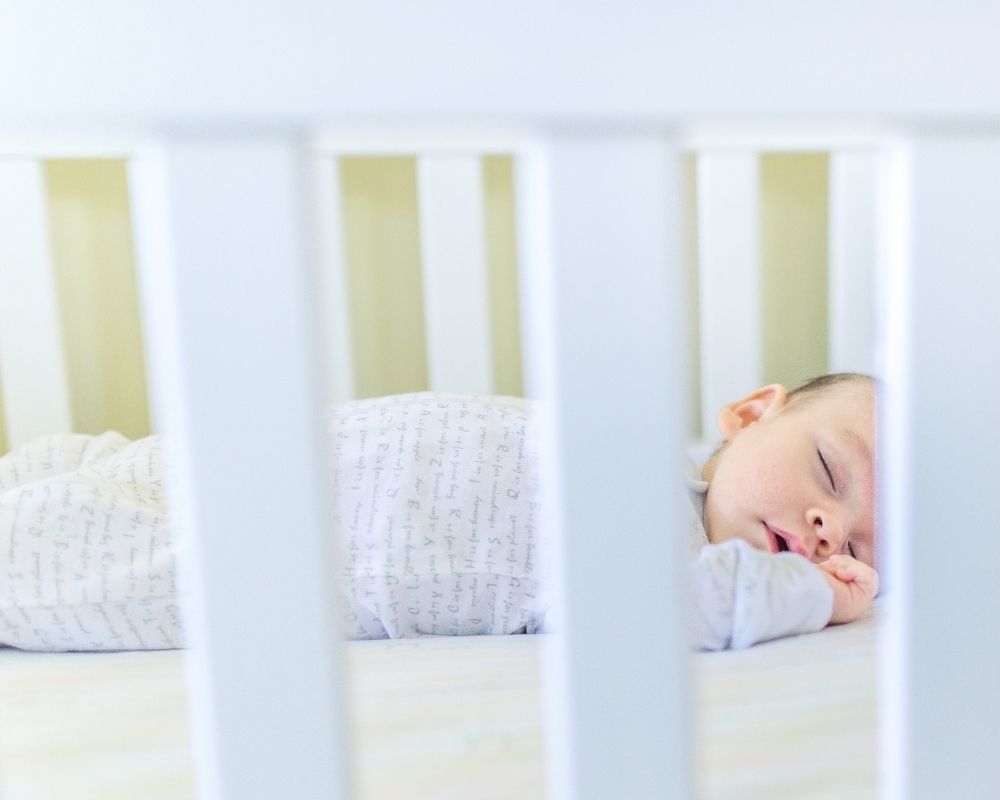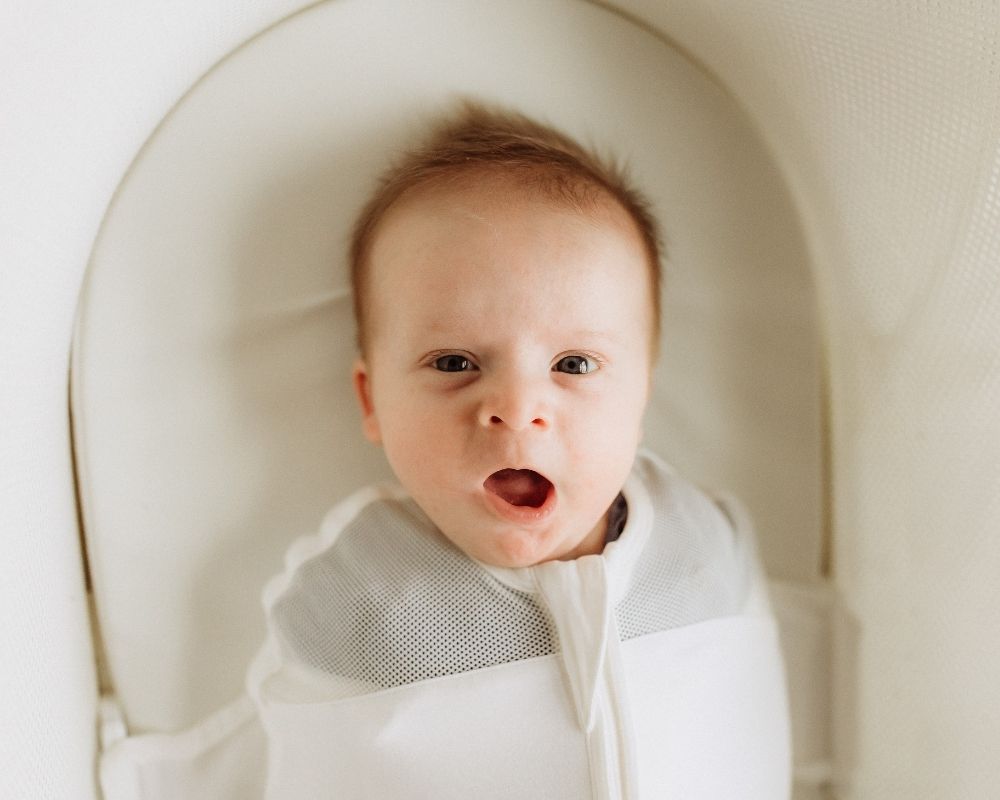If your baby is having a false start bedtime it can throw off your entire evening. Learn why a false start bedtime happens and how to fix it.

Does your baby fall asleep at bedtime, only to wake up within an hour or less?
In the sleep world, we call this a false start.
False starts at bedtime are super common but why do they happen and how can you help your baby from having them? Let’s dive into false starts to make your baby’s bedtime much smoother.

Why Does My Baby Wake up After Bedtime?
If your baby wakes up 45 to 60 minutes after bedtime, it’s usually due to them being overtired, under tired, or not having the ability to fall asleep on their own.
False starts at bedtime can be pretty common with babies.
There’s typically three things that causes them. (These are the same reasons why your baby is waking up 30 minutes into nap time too):
1. Baby is Overtired
Often, if you have an overtired baby, you will see false starts. It sounds crazy, but overtired babies often have a hard time staying asleep.
Everyone wakes up very slightly between sleep cycles, but overtired babies tend to wake fully after the first sleep cycle of the night. They may even wake before the first sleep cycle is complete.
Overtiredness is the most common reason for false starts.
2. Baby is Undertired
As frustrating as it may be, false starts can also happen when babies are not sleepy enough at bedtime. They are tired enough to fall asleep, but not tired enough to stay asleep.
Essentially, they treat the first 30-60 minutes of sleep after bedtime as a nap and wake up feeling rested and ready to go.
This can be the case when a baby is ready for longer wake windows. If your baby has had the same sleep schedule for several weeks, the sudden appearance of false starts at bedtime could mean it’s time for a schedule change.
3. Sleep Props
The third common cause of false starts is if your baby is not falling asleep on their own.
Sometimes, a baby will start to get drowsy while feeding or rocking. When this happens, your baby is drowsy but awake when you put them in their crib.
That parental help getting drowsy can be just enough of a sleep association / sleep prop that your baby then struggles to return to sleep after their first sleep cycle.
Or, a baby may fall asleep during the bedtime routine, sleep through the transfer to their crib, and wake up shortly afterwards.
Toddlers are not immune from false starts either. False starts are more common in babies under a year old, but we do sometimes see them in young toddlers.
When young toddlers have false starts, it’s usually because they depend on a parent to help them fall asleep and return to sleep.
Get Better Sleep with The Baby D.R.E.A.M. System
If you want someone to walk you through the process of sleep training, let me help. The Baby D.R.E.A.M. System is for babies 4 months through 2.5 years old. I’ll walk you through how to establish daily routines, sleep schedules, and sleep training techniques to help you break the sleep associations you no longer find beneficial! Check it out here.
What Do You Do When Baby Has A False Start?
If your baby has a false start, help them get back to sleep in the same way that you would at bedtime.
If they’re overtired or need help falling asleep, you may need to assist them a bit in getting back to sleep.
How to Prevent False Starts at Bedtime
The good news is that false starts are often preventable. Here’s how to prevent false starts in the future.
Look at your Baby’s Wake Windows
The first thing to look at when fixing a false start bedtime is to look at your baby’s sleep schedule and wake windows.
Often baby sleep cues become unreliable or misleading, so following a good sleep schedule can help.
If you think false starts are happening because your baby is overtired, then move your baby’s bedtime earlier and/or move naps closer together.
If false starts are happening because your baby is not tired enough at bedtime, move your baby’s bedtime later and/or put more time in between naps.
Sleep Associations / Sleep Props
Fixing a false start bedtime is more challenging if the cause is a sleep aid helping baby to get drowsy or fall to sleep all together.
If this is the cause, start by looking at your baby’s bedtime routine.
If you think your baby is getting sleepy during the feeding, try shifting the order of your routine. This is where having an eat play sleep routine can be helpful.
Move your feeding to the beginning of the routine and leave the lights on to help your baby stay awake.
Often, that simple tweak makes a world of difference at bedtime.
If your baby is falling all the way asleep during your bedtime routine or you don’t know how to keep them from getting drowsy at bedtime,, you may want to consider using a sleep training method to help your baby fall asleep without your assistance.
Frequently Asked Questions About False Start Bedtimes
What Are False Starts at Bedtime?
A false start is when a baby falls asleep at bedtime and then wakes up shortly afterwards. It may be as few as 15 minutes later, or may be as long as an hour or so later.
If this describes bedtime at your house, you know how frustrating false starts can be.
Do Babies Outgrow False Starts?
Maybe.
Some babies will naturally sleep longer stretches and outgrow false starts, or you might change their schedule so they are no longer over or under tired.
Some babies might need a little more help growing out of them.
You can help expedite the process by teaching your baby to fall asleep independently with a sleep training method.
Is there A Difference Between the 45-Minute Intruder and False Starts?
The 45-minute intruder usually refers to your baby waking up 45 minutes into nap time, but it can refer to bedtime as well.
With the 45-minute intruder and false starts, your baby wakes up after a sleep cycle and has a hard time falling back asleep.
If you have questions about false start bedtimes, leave a comment below and our team will try to help torubleshoot!
- Practical Tips if your Toddler is Going Through A 3-Year Old Sleep Regression - April 26, 2024
- Baby Led Weaning vs Purees — Which Should I Choose? - April 25, 2024
- 10 Adorable Letter Board Pregnancy Announcements - April 25, 2024







